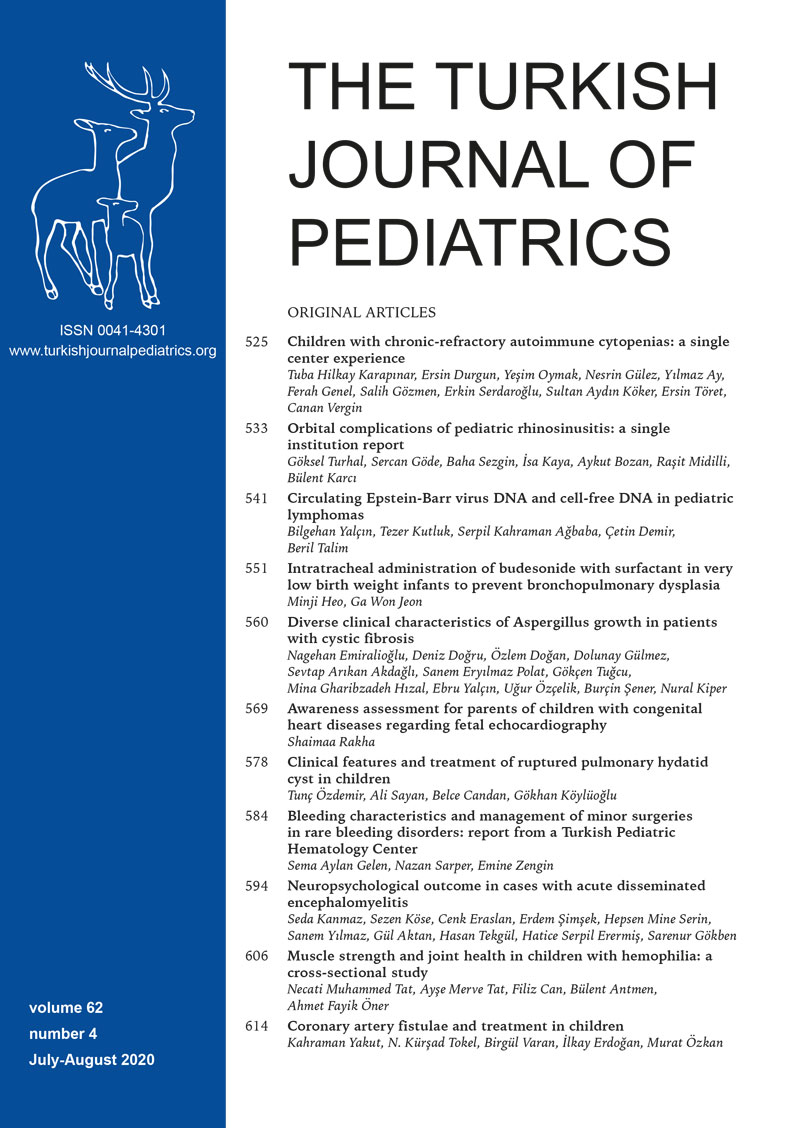Abstract
Background and Objectives. We aimed to evaluate joint health in children with hemophilia (CwH) and to investigate the effects of hemarthrosis on the musculoskeletal system.
Method. Forty-one CwH aged between 6-18 years participated in the study. Joint health status was evaluated according to Hemophilia Joint Health Score (HJHS). Pain intensity level was assessed in resting and in activity using Visual Analog Scale. Range of motion was measured with goniometer and muscle strength was assessed with digital dynamometer. Arthropathic joints were examined in three groups named knee, elbow and ankle.
Results. Physical examination revealed arthropathy findings to be found in 29 knee, 19 elbow and 18 ankle joints. The median of flexion angle of the affected side were 120°, 122° and 12° for the knee, elbow and ankle and extension losses of these joints were 5°, 7° and 0, respectively. In CwH having knee and elbow arthropathy, index joint HJHS was found to be significantly higher than those with ankle arthropathy (p < 0.01). The flexor and extensor muscle strength significantly decreased in 11 CwH with unilateral elbow arthropathy compared to the non-arthropatic side (p < 0.05). In 15 CwH with unilateral ankle arthropathy decreased in the extensor muscle strength (plantarflexors) (p < 0.05). Extension loss showed a good correlation with index HJHS of elbow, knee and ankle joints, respectively. (rs= 0.599, 0.576, 0.606, p < 0.01). We observed that the muscle strength of elbow flexors/extensors and ankle extensors were significantly decreased compared to the non-arthropathic side. However this situation was not detected in knee joint despite having highest index HJHS.
Conclusion. Our findings indicate that hemarthrosis may cause more muscle strength loss in the upper extremity than the lower extremity. Furthermore, extension loss was found to be an important parameter in physical examination of hemophilic arthropathy. Musculoskeletal system should be evaluated comprehensively at regular intervals and when necessary rehabilitative treatment should be planned.
Keywords: arthropathy, hemophilia, muscle strength, physical examination, range of motion
Copyright and license
Copyright © 2020 The Author(s). This is an open access article distributed under the Creative Commons Attribution License (CC BY), which permits unrestricted use, distribution, and reproduction in any medium or format, provided the original work is properly cited.














